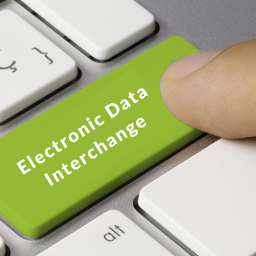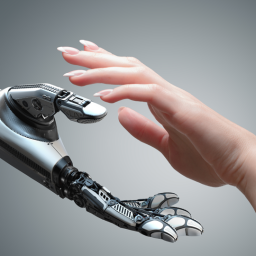
We are not far away from a world, where more and more of our built environment will breath digital life. The Internet of Things (IoT) is making it possible for everyday objects to interact with us and each other, and even make collective and informed decisions! IoT is an imminent reality and will most probably become a multi-trillion dollar industry. A report by Gartner predicts that 20 billion objects will be connected via the IoT by 2020.
Simply put, the Internet of Things (IoT) is making an ecosystem of billions of devices and objects worldwide, which are capable of communicating with each other and even make smart decisions on their own!

However, there is a reason why the immense potential of IoT hasn’t been realized yet. The two most pertinent challenges facing the IoT revolution are Centralization and Security.
Researchers everywhere have been looking for a solution to these two main issues. With its success and security in cryptocurrency, blockchain technology has emerged as the only saving grace. It is no surprise then, that new prototypes of IoT systems are beginning to use blockchain as the backbone of their data ecosystems.
Centralization
The centralized server/client model, which works by connecting authenticated devices through huge cloud servers, will not be able to meet the needs of the IoT. Every data exchange goes through the cloud in this model, which means that these exchanges require a long time and massive storage capabilities.
The massive amounts of data generated in an IoT ecosystem will be unmanageable for even the biggest server farms of today (imagine the costs of scaling up to even bigger ones!). Moreover, the exchange and authentication of data will not be fast enough through a centralized server to build an efficient IoT ecosystem.
Blockchain Technology works on a decentralized and ever-growing stream of data records, which can only be added to (as long as it is a big ecosystem, it is far too big a project to modify past data).
There is no central master server in the chain and all exchange is peer-to-peer. Further, it is public – not in the sense that anyone can see the content of one’s transactions, but only that the transactions themselves exist for everyone.
Blockchain’s Solutions for Centralization
- Decentralized – No Central Authority or Storage Server
- Encrypted – Extremely Difficult to Modify Data Stream
- Fast – Direct P2P Communication, Without Cloud routing
Thus, Blockchain has the ability to provide a data ecosystem which does not require a massive server farm for storage or authentication of data transactions. Instead, the power and capacities of billions of devices and objects across the world can be harnessed in a completely decentralized IoT based on blockchain. The power of authentication too, will be distributed to all the members/devices in the ecosystem.
“It’s time for the cloud to move from the data centre to your doorknob!” – IBM report on Device Democracy.
Device Democracy
Moving on from pragmatic concerns of a centralized ecosystem for the IoT, let’s move on to security and privacy concerns, which are perhaps even bigger hurdles than the practical feasibility of a centralized system.
It is not impossible to imagine an Orwellian disaster with a centralized IoT. The biggest threat of a centralized system is intrusive surveillance and advertising.
Conventional digital ecosystems place the reins of power in the hands of a central master, which often belongs to large corporations or governments. Surrounded by an intelligent and interconnected physical environment, the risk of authoritarian control and exploitation is far too grave.
Distributed, peer-to-peer computing is the short answer to this Orwellian problem. IBM-Samsung ADEPT (2015) was an IoT concept which was developed using blockchain technology and peer-to-peer interaction between household appliances.
A Demo of ADEPT https://www.youtube.com/watch?v=U1XOPIqyP7A
ADEPT was able to build multiple use-cases of self-servicing and self-transacting machines, which made intelligent decisions to sustain their productivity. They processed information about their surroundings and their own conditions. Subsequently, they made transactions with other machines and even e-commerce marketplaces on their own!
Two features of blockchain technology were seminal in its success – 1. Smart Contracts: Condition-based algorithms, which allow machines to govern themselves and make their own decisions if the condition is fulfilled; and 2. Trust-less Network: an ecosystem which does away with the need to trust participants in the ecosystem, and instead seeks authentication using a common consensus.
Using smart contracts, the appliances were able to gauge conditions (for example, low detergent in a washing machine) and automatically placed an order for detergent on an e-commerce store. The transaction took place using peer-to-peer communication between the washing machine and a computer.
As the condition decided by the smart contract was fulfilled, the computer went ahead and placed the order. Even the transaction was completely using blockchain currency! There was no need for authentication since the network was trust-less and the conditions of the contract were built into the blockchain itself.
Thus, ADEPT was able to develop a working demo of an IoT ecosystem which doesn’t depend on a central authority, communicates peer-to-peer between devices instantly and is safeguarded against both external and internal threats.
Security
Blockchain has succeeded with FinTech because it is almost impossible to hack into the stream of peer-to-peer data, distributed over all participants in the ecosystem. Without a central point of interception or error, it will take unimaginable amounts of processing power to hack a distributed data-stream (as long as it is distributed across a large number of systems).
However, an IoT ecosystem is not as simple as a FinTech ecosystem. The former involves an exponentially larger number of transactions, which include but are not limited to economic transactions. Moreover, a private IoT system may only involve a small number of participants, which may render it vulnerable to tampering or intrusions.

The question of ownership and privacy are paramount if the IoT is to become a secure global reality. As a result, researchers and companies have developed case-specific solutions for IoT security. Most are aimed at partial oversight by a human administrator or a system of layered authentication of entry into an IoT ecosystem.
For instance, researchers at the University of New South Wales developed an IoT powered home, where a block miner (much like a router) oversees both domestic and foreign transactions with the system. Researchers at MIT developed a semi-permissioned blockchain, wherein layers of authentication mediate entry and exit into a blockchain ecosystem while maintaining user anonymity.
While no universal solution to blockchain security has come forth yet, customized measures are being developed specifically to the application at hand. The common thread in IoT security systems is balancing complete freedom of access and sharing on one hand, and security restrictions and controls on the other (much like any social system!)







